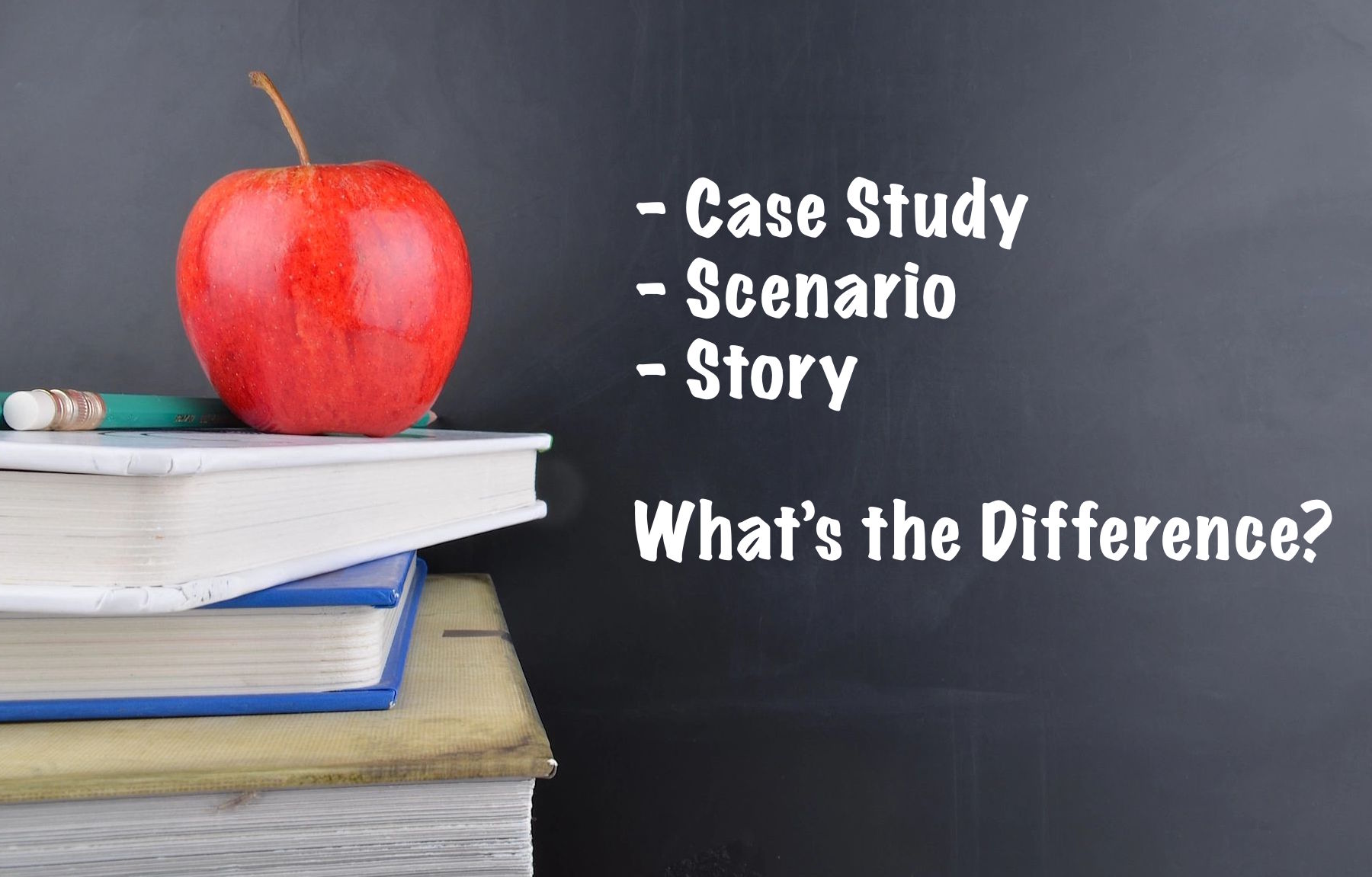
The term Case Study is often used loosely and interchangeably with the terms scenario and story-based learning. This often causes a lot of confusion. Some may argue “what’s in a name”, but others, especially those who diligently practice the craft of instructional design, will empathize with me.
Many unnecessary debates, discussions and re-scripting happen due to the lack of a common understanding of these terms. What if we could devise a method to elicit exactly what the client desires? But, is it possible to cut down the iterations and figure this out up-front? Well, we can definitely make an effort. Let’s see how.

Case Study
Case studies are used to teach how knowledge is to be applied in real-world situations, and the consequences one could face while doing so. They are popularly used in higher education, especially in business schools, law schools, and medical schools. In recent years, case studies have become a popular way to train corporate professionals too.
A Case Study is often lengthy addressing all the dimensions of the topic under study. It is high on facts, and is mostly supported with actual data and figures. Rarely does it include any exaggerated or extraneous content. In short, it is a detailed description of a situation with accompanying data to analyze. Typically, it will include the following elements:
- A description of a problem and its context
- A dilemma that is to be resolved, or a decision to be taken
- Supporting data – Data tables, exhibits, interviews, supporting documents and so on
Scenario
On the other hand, a scenario is normally shorter than a Case Study. It is a fictionalized account of a situation set in realistic settings. The context and environment is the real-world workplace, but the situation could be made up. As in a Case Study, scenarios can pose a dilemma to be resolved by the learner, a decision to be taken or a problem to be solved. However, scenarios usually do not have too much data or information to be analyzed. Typically, scenarios will include the following elements:
- A description of a problem and its context (real-world/workplace)
- A fictionalized account of a dilemma that is to be resolved, or a decision to be taken
- Supported by characters, dialogues and conversations
Story
Stories are great way to learn. Especially, if you are addressing the affective domain. The high emotional content in stories ensures high learning impact. The emotional content is what makes a story different from a case study or a scenario. This is added by way of a plot, theme, dialogues or even characterization. This is why stories stay with people much longer than facts or statistics – the emotional content gives meaning and context to information. Typically, if you are teaching through stories, it should include the following elements:
- High emotional content
- Writing style is exaggerated for immersion and impact
- Presence of fictional elements is a must – plot/theme, characters, dialogues and context
So, when you are writing stories, writing case studies, or writing scenarios, keep these above points in mind.
Check out this free course sample to see how a story is weaved into learning material.
2 responses on "Case Study, Scenario, Story: What's the Difference?"
Leave a Message Cancel reply
You must be logged in to post a comment.
Tools
Type
Companies
Product Categories
Recent Comments
- Silvia on Basic English Assessment
- Om Parkash on Basic English Assessment
- Harsh on Cognitive Load Theory
- Siva priya S on Introduction to Instructional Writing
- Parkavi Balasubramanian on Introduction to Instructional Writing
- Sri Sai Krishna Teja on TNA & Design
- Sri Sai Krishna Teja on Cognitive Load Theory
- Dr. Ruchi Sharma on Introduction to Instructional Writing
- Darsana on Basic English Assessment
- Pranay on Designing Assessments


Thank you, your explanation was concise, i understood in less than 30 seconds
Thank you for clarity on these topics. The comparison and differentiation helped my understanding.